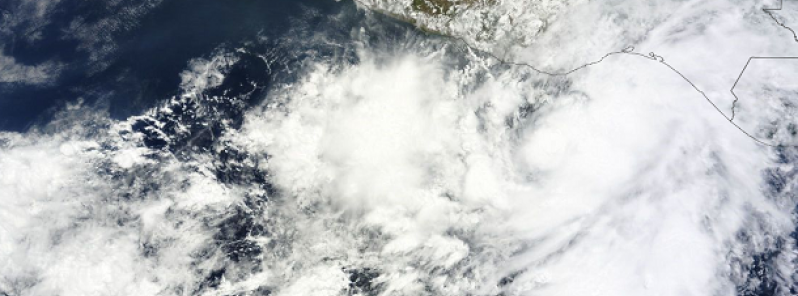Artists’ Statement
Cymene Howe and Dominic Boyer
In some places, the dust never seems to settle. Throughout Mexico’s Isthmus of Tehuantepec wind finds its way everywhere, lifting particulate matter, raising small stones from the road, harassing the matted fur of a dog, insinuating itself against the lopping blades of turbines to make electricity. The wind in the Isthmus, as everywhere, is a negotiation between gases that are compelled across space and time by combinations of heat and cold differentials, floating over land and sea, pressured shifts in directionality and potency. This is the physicality of the wind, its material life. Wind becomes contoured by objects in its path—mountains and hills, cliffs and stands of forest, buildings and creatures. It also willfully exercises its force upon these things, carving, cracking and pressuring—leaving its ventifactual imprints. It is a relief from the heat, a force to struggle against or a welcome bluster that blows smoke from our eyes. But the power of the wind is not singular. It is as multiple as the world it inhabits, both absorbing and forming its conditions.
Over the past decade México has become known as a country beset with drug war and neoliberal policies, a weak state gradually ceding its sovereignty to cartels and capital, a state from which its citizens seek to escape. What is less well known is that during the same period the Mexican government pushed to transform itself from pure petrostate to a global leader in clean energy development. Under the leadership of President Felipe Calderón (2006-2012), México passed some of the most aggressive clean energy legislation anywhere in the world including legally mandating that 35% of electricity be produced from non-fossil fuel sources by 2024, with 50% of that green electricity expected to come from wind power. For the ancient Greeks, Aeolis was the God of Wind; across the isthmus it is energía eólica—wind energy—that has come to occupy lands and sky.
We interviewed President Calderón about his renewable energy aspirations for the country in the spring of 2014 and he explained that he felt compelled to act because of México’s vulnerability to the effects of climate change, particularly the devastating impacts of droughts and flooding across the country. But he also admitted that México was being pushed toward renewable energy transition by its disappearing petroleum production, down 25% since the middle of the 2000s. Calderón confirmed that petroleum sales account for no less than 43% of México’s federal budget, meaning that every other project of the Mexican state is intimately contingent on the revenue from oil. In a strange way, renewable energy at home also served a petropolitical purpose: freeing more oil to sell abroad.
The Isthmus of Tehuantepec, a 200 km strip of land between the Gulf of Mexico and the Pacific Ocean, has long been envied for its strategic potential in fostering interocean trade and for its natural resources. Hernán Cortés asked that his Marquisate be granted large holdings in the Isthmus where he built the largest port in the Spanish colonies. In the mid 19th century the Isthmus was very nearly ceded to the United States of America to create an interoceanic railroad and canal. The Isthmus also sheltered the last autonomous Zapotec Kingdom that for centuries had resisted, with considerable fierceness and success, the political and cultural hegemony of first the Aztecs, then the Spanish and eventually the Mexicans.
Indifferent to the politics and lives of human communities, wind pushes through the Isthmus, a natural wind tunnel owing to the barometric pressure differential between the Gulf of Mexico and the Pacific Ocean. The windiest part of the Isthmus lies south of the Chivela Pass, a 60km wide gap in the Sierra Madres where air from the Bay of Campeche in the north flows unimpeded to the Gulf of Tehuantepec in the south. In the winter months, the north wind there routinely blows up to 25 meters/second (55 mph) with exceptional events reaching Tropical Storm or even Hurricane force. A study by the National Renewable Energy Laboratory in 2003 confirmed that the Isthmus offers the second best terrestrial resources for wind power development of any place in the world. In the mid 2000s development of those resources intensified in accordance with Calderón’s clean energy plan. In 2008 there were two parks in the core wind zone producing 84.9 megawatts of wind-generated electricity; four years later there were 15 parks producing over 1300 megawatts, a 1467% increase that has made México the second largest wind power producer in Latin America after Brazil.
The Istmeño wind boom was the subject of our sixteen months of ethnographic field research in 2009, 2011 and 2012-2013. We found that the proliferation of wind parks has been contentious at every stage of their installation. Those supporting wind power speak of global climatological good and local economic development. They dream of a “city of knowledge” rising from the ranchland creating a zone of upward mobility where turbine engineering and expertise would flourish in the heart of one of the poorest regions of one of the poorest states in México. Those opposed to wind parks meanwhile see economic imperialism by foreign capitalists coming, once again, to colonize the region through extractive methods that threaten local ecosystems and food sustainability while returning little in the way of general social benefits. Local landowners who receive usufruct rents, caciques (local bosses), and politicians are suspected for taking and issuing bribes to coerce support for wind power projects. Further complicating matters, much of the choicest land for wind development has been held in a centuries-long communal property regime; who is authorized to speak for the comuna has thus become a burning concern that has divided neighbors and families even to the point of violence. Questions about indigenous peoples’ sovereignty and the rights of landless peasants are also constantly in the air.
In local binnizá (Zapotec) and ikojts (Huave) cosmologies, the northern wind has long been considered a sacred power, part of a world-generating life force but also at times dark and destructive, “the devil’s wind.” In the past decade, that northern wind has increasingly become intertwined with land politics, resource politics and the wider biopolitics of life in the Anthropocene. We came to feel that the concept of “wind power,” as it was emerging in Anglo-European neoliberal discourses of modernity, was concealing more than it was revealing of the turbulent forces of wind and power operating in the Isthmus. We started to talk about “aeolian politics” instead in order to deconsolidate the sign of “wind power” and to displace it from familiar technical, moral and economic paradigms of energy decarbonization.
To be clear, we are both deeply concerned about climate change and other phenomena of the Anthropocene. We both strongly support renewable, sustainable energy forms. However we have come to question the assumption that wind power, in all its forms and contexts, provides salvation. Modes of wind power that repeat the extractive practices and resource imperialism of the carbon age, we believe, will not be able to tip the scales and intensities of modernization that have led us to the Anthropocene in the first place. Wind power’s redemptive powers are often turned toward cleansing the wounds of modernization and its power grids, paying little attention to how it displaces and irritates living beings ranging from some binnizá and ikojts residents of the Isthmus to the mangroves and fish of the Laguna Superior. The lens of aeolian politics reveals that “wind power” turns out to be everywhere a different ensemble of force, matter and desire. This power has no summary form; it is a matter of pressures, flows and frictions, air moving around and through efforts by corporate executives, politicians, engineers, landowners, activists, neighbors and anthropologists to exert their varying degrees of epistemic and moral authority upon it.
Why create this installation? We have already engaged aeolian politics in essay form (Howe and Boyer 2015), with more to come in the form of a “duograph,” a parallel-authored, two volume text developed from a shared ethnographic archive (forthcoming Cornell University Press 2016). In this work we discuss four ventifactual “matters of concern” that emerged during our research: “Viento, bi, wind;” “Tierra, terreno, land;” “La red, la luz, grid” and “Verde, green.” But we felt that there is something lost when one only reads about the complex wind of the Isthmus without feeling that wind and understanding how its intensity is an essential part of aeolian politics. That wind has been known to strip paint off of boats and to flip tractor-trailers; this is no ordinary wind. And thus, this is not just another story about land and resource politics, it is about a lively wind that carries the earth within itself, whose howl and moan drowns out human voices. This wind irritates, assails, invades, it makes fierce temperaments and “strong backs” as we often heard from our interlocutors in the Isthmus.
The rationale for this installation is to restore the wind to aeolian politics, making a visitor see, feel and hear not just anthropolitics but ventipolitics as well. To understand the one, one must also understand the other. The situation of wind power development in the Isthmus of Tehuantepec demands appreciation of seemingly incommensurable ecologics and the relentless pressure of air. As you have moved through this installation you have felt the soft breeze of redemption, the southern, gentle and “feminine” wind of the south, binnizá. And then you have been assailed by “el norte” the devil’s wind, finding your footing where you can. And you have heard, through all of this, the poetry of the wind’s power as read by the great binnizá poet Victor Terán. At each turn and bluster you have encountered moving images: the first swelling with the redemptive potential of energía eólica, the second, in the streets, challenging the ways that wind power has occupied the Istmo and finally, Terán, narrating the arts and pains of the wind, the sounds of Juchitán surrounding him, the wind in pause.
For us, if there is a message in this work it is to say that some constellations of aeolian politics may be capable of blowing us back toward the Holocene; others, however, will not.
Download the Gallery Guide: A Companion Document to the Exhibition


